Thermal Performance
Thermal performance was tested on an overclocked i7-4930K running at 4.6GHz. 3 mounts of each orientation was done to determine the ‘best’ orientation. Then a further 3 mounts were done only on the ‘best’ orientation. Of these 6 results the worst one is thrown away. In other words one bad mount is allowed as human error, but two bad mounts is assumed to be the fault of the mounting hardware and will impact results. The TIM used was Arctic Cooling MX2 – this TIM has a low cure time and is easily spreadable and has a low mount to mount variation. The TIM is burned in for an hour with a custom Prime95 run to allow it to cure and then thermal data is logged every second for thirty minutes. All 6 CPU core temperatures are logged by RealTemp, while the coolant temperature is measured by an Aquaero 6 and logged by HWiNFO. While the Aquaero isn’t the most accurate device for logging temperatures – given the standard deviation of the results and the higher temperature deltas in question it is “good enough”. During all of this testing pump power is fixed and hence flow varies slightly depending on the block in question. Flow rate for all blocks is typically slightly less than 1.5GPM.
Other hardware used – Rampage IV Gene, GSkill 4x8GB 1866 DDR3, Corsair AX1200, Samsung 840 Pro SSD, Swiftech MCP35x2 Pump at 34% PWM, King 3.5GPM 10″ Rotameter, EK X3 400mm Reservoir, Koolance Quick Disconnects, Primochill Pro LRT Tube. Due to the aging tube plasticizer build up in the system is a problem and blocks with narrow flow channels can be clogged quickly. For this reason the blocks were cleaned every single mount. This was not at all frustrating and we look forward to breaking down the bench and rebuilding with better tube, clean components on a 5820K/Rampage IV Extreme shortly.
The “Goofy” orientation was found to be the best for our 4930K:
As can be seen the Watercool Heatkiller IV Pro dominated the thermal performance testing. The basic acetal version still did well and came in roughly 3-4th place. However it’s standard deviation was far better than the CPU-380 and so looks much better when we look at 95% confidence intervals:
Suspicious readers will no doubt red flag the results due to the EVO performance. It is afterall below the budget EK Supremacy MX block. This is the same EVO block that performed worse than the original Supremacy when we tested and reviewed it on the 4770K. We have another sample to try and will be testing this in case this is just a bad block.
The 95% confidence intervals also show that the nickel plated block might actually be better than the copper. Typically some users worry about nickel plating making performance worse and usually without data to back it up we reassure them that plating is too thin to make a difference. Perhaps however we have been wrong. Part of the difference may be not the plating but the surface preparation that is done before plating. The copper base has machining marks but they are more subtle on the nickel plated version:
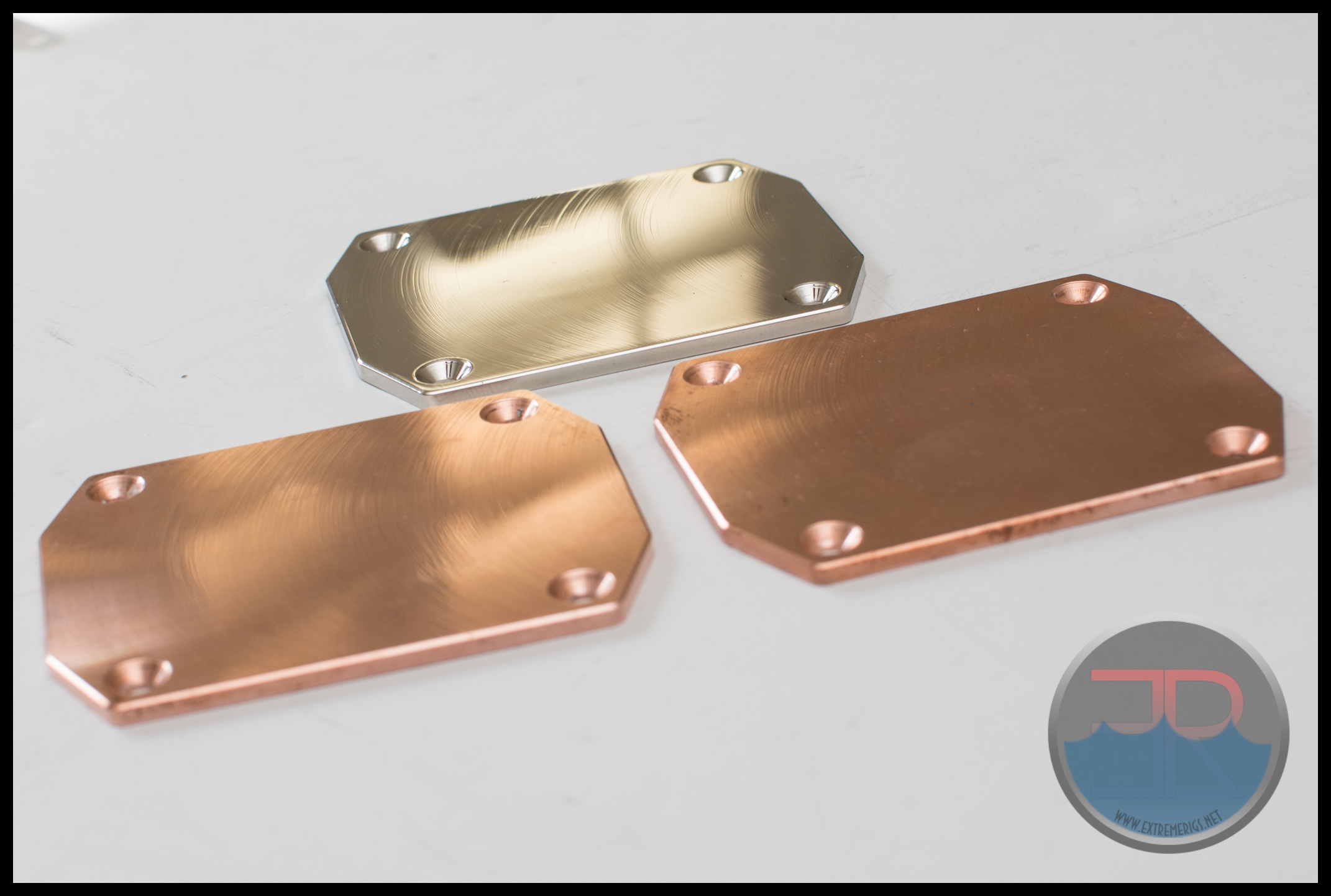 This may allow a slightly thinner layer of TIM and hence better performance. In addition the plating did seem to change the restriction slightly so even the ratio of coolant to metal in the channel may have slightly changed and be affecting the results. If it sounds like we’re clutching at straws to explain this slight difference then it’s perhaps because we are. It may also be sample to sample variation. It’s hard to be sure and this result should not make anyone jump to conclusions that nickel plating is always better than pure copper. To be honest it’s not a result we expected and while the difference is small given the tight grouping of the results it’s hard to just pin on error – though it could be just that!
This may allow a slightly thinner layer of TIM and hence better performance. In addition the plating did seem to change the restriction slightly so even the ratio of coolant to metal in the channel may have slightly changed and be affecting the results. If it sounds like we’re clutching at straws to explain this slight difference then it’s perhaps because we are. It may also be sample to sample variation. It’s hard to be sure and this result should not make anyone jump to conclusions that nickel plating is always better than pure copper. To be honest it’s not a result we expected and while the difference is small given the tight grouping of the results it’s hard to just pin on error – though it could be just that!
The Heatkiller III still does very respectably too despite being such an old design. Indeed the main reason to choose the IV is perhaps not the improvement in thermal performance then but the wider ports, the better mount and the many different aesthetic options!







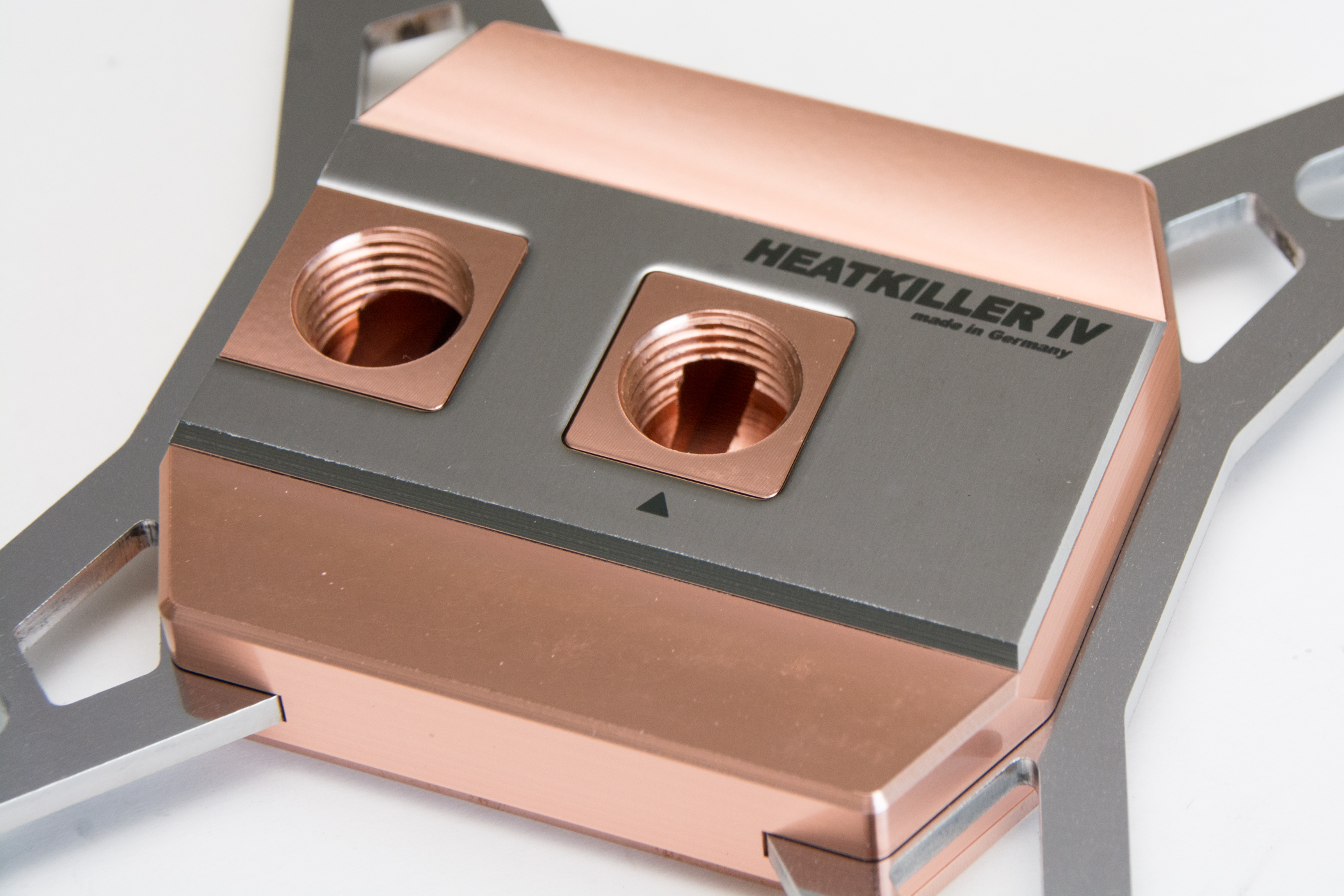
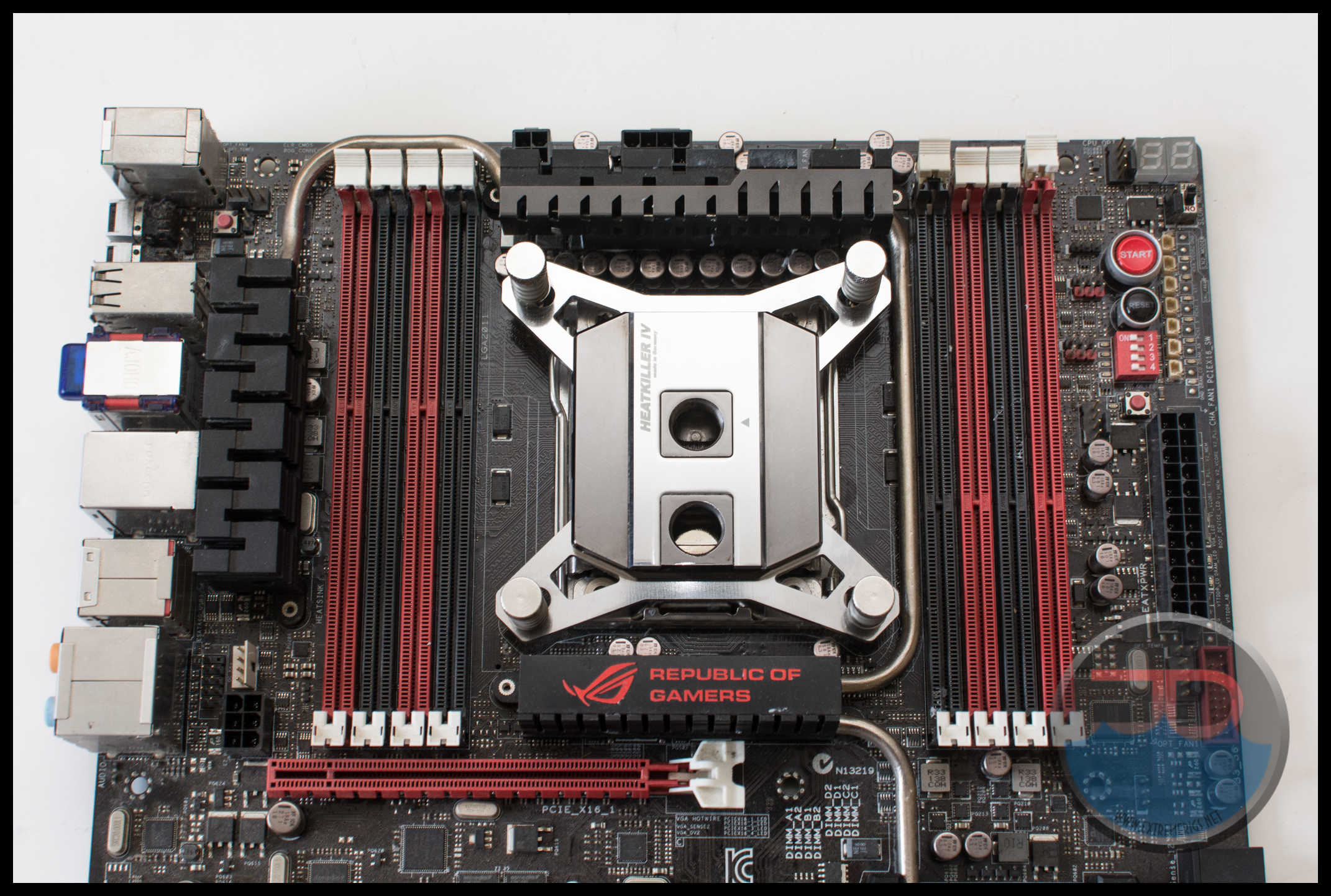
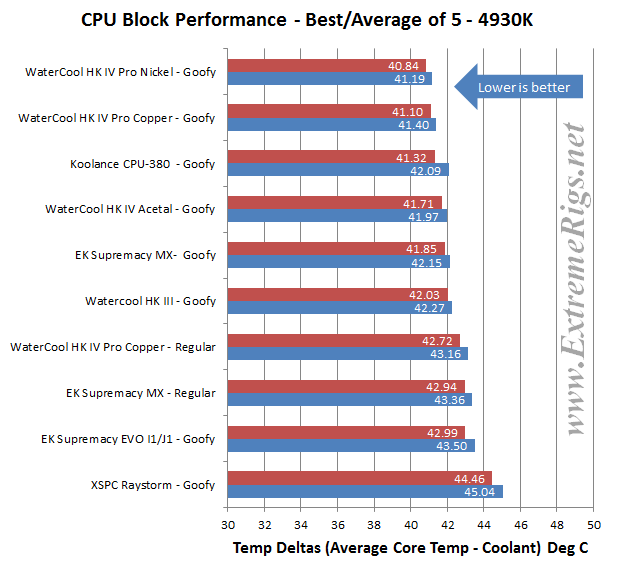
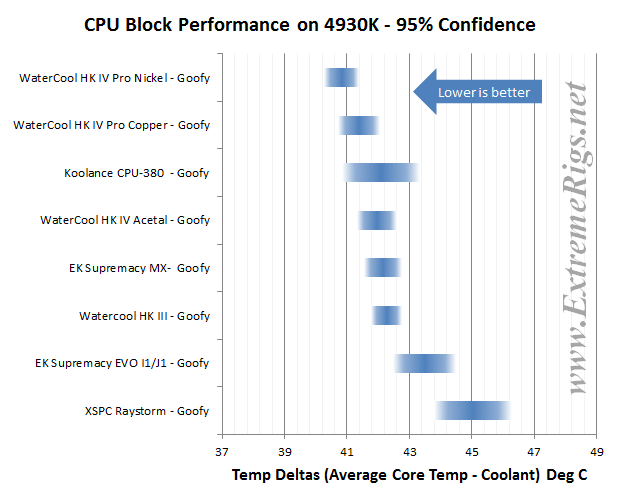



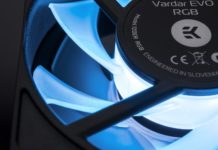

Greetings from Germany!
Awesome review, thorough as usual and very much appreciated.
While it may be impractical to add another block to the restriction graph, a graph with select blocks would be nice.
i remember a tweaked/moded HK3 on skinnees (http://skinneelabs.com/heatkiller-3-0-lt-lc/2/) for those with a HK3 it might be interesting to see how it compares. Vapor had an improvement of 1.3 deg C which would in theory even beat the HK4. 😮
all the best
DX2
p.s. i had a question about your testing, i sent an email.
greetings from Germany!
Awesome review, thorough as usual.
A restriction graph of the HK4 as a link or compared to a select few would be nice.
i remember on skinnees, Vapor reviewed the HK3 LT. He tweaked/modded it getting 1.3 DegC improvement. It would be really interesting to see if the tweak delivers, assuming it does, it would even beat the HK4 :-O
all the best keep the reviews coming!
i had a question about your testing. i sent a email. ^_^
greetings from Germany!
Awesome review, thorough as usual. Keep up the good work!
A restriction graph ith a select set of blocks would still be nice tbh.
The HK3 LT review from skinnee included a modded HK3. It was 1.8 Deg better than unmodded if those result hold true the modded hzk3 might best the HK4. It would be awesome if you tried the mod!!
many kind regards
DX2
p.s. i sent a question via email.
I’m curios about the price differences in these blocks. Was the universal back plate necessary at all? It adds ~12USD more to the overall price. Currently, this will make it ~100USD simply for the cpu waterblock. Just curios to know if they’re any help, or if they’re required.
Honestly I haven’t tried it, and of course its only needed for socket 115x, but I would be reluctant to not use it. CPU blocks can mount with a fair bit of pressure, and I’d want to avoid bending the board.
One thing I can add after learning from experience. The HK3 water block works real well. Then the plasticizer from the flexible tubing clogs it. This happens anywhere from 6 to 9 month intervals with a OC’d AMD FX 9590 and 2 OC’d R9 285s. After the 2nd cleaning you notice the fine cuts in base are filled with crud. I found the best cleaner is tooth paste mixed with vinegar. The real problem is finding a brush with bristles fine enough go in between the ridges and stiff enough to remove it without scratching or bending them. So if you are not using rigid tubing, the HK basic maybe be better when it comes to cleaning. It is best not reuse the old tubing (leaks). Have not done a ridged reinstall, yet,,, but I believe careful disassembly and attention to orientation can be done without heating and bending new tubes. It is possible that the heat from the 9590 is more concentrated than the heat from the 285s because I did not notice as much crud in them?
Comments are closed.